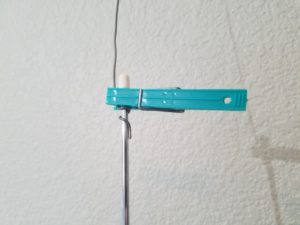Good Morning from my Robotics Lab. This is Shadow_8472, and today, I am giving my first thoughts on peering into the “Linux World.” Let’s get started.
This week, I’m giving my post sort of in parts. As for when I start this post, I don’t know how far I will make it. That said, I will probably be commenting on things I learn from, mostly videos I don’t choke on.
…
Getting started, I found an older video uploaded by Eli the Computer Guy. His Introduction to Linux went over the basics of Linux, covering many topics. Give it a watch if you want into Linux. Just know, it is not a quick guide. It is more like a “Here’s what you ought to know before starting” type of video. A big thing I learned about was my misconception about licensing for open source software. Long story short, “open source” does not imply “100% free.” I want my robot personality project to use software that is free. Open source is just a good positive, but not big enough for me to worry over.
My big takeaway from the lesson: there are many distributions of Linux for a reason; each one is optimized for its own application; interested parties must know exactly what they want their system to do before they reach for the prettiest one and dig in
According to my prior research, Ubuntu seems to be my best shot, but I am not sure yet. Back to research.
…
I found another New-to-Linux video. Uploaded by Joe Collins, his video, Top 5 Mistakes New Linux Users Make, is aimed at brand new Linux users, like me. He says he has tons of experience with getting people into Linux. Based on his recommendation, I think I want to check out Ubuntu MATE (Ma-Té) and hope it works with Gazebo and ROS. He also gave a warning about “borking” a computer. Read: user induced software meltdown. My system is pretty stable as it is. He recommends getting a separate system to play around on. I think I may take that route.
In any case, I doubt I will be installing Linux THIS week. If it weren’t for this blog, I probably would be losing focus at this point. I’m already invested a little, and I don’t want to stop here. Besides, I think setting up a separate Linux computer for my private MineCraft server will be a good stepping stone project. I may even spend some time learning how to remote in from my Windows 10 machine.
In the meantime, I think I’m just going to try and take consistent steps on my overall project, even if some of those steps are finding out I had severely underestimated the next planned step.
…
In closing: No Linux today, expect another slow update next week. Maybe I will look into the way you are supposed to get software. I hear it isn’t by just Googling for it and downloading. Final Question: Do you use Linux? If so, how common is it to really mess something up when you are changing an innocent enough looking setting?


 I eventually got tired of the static and tried to fix it. The sliders on the front helped, but not enough. Touching the antenna seemed stabilized the signal almost perfectly, but no one seemed interested in standing there with an arm on the thing.
I eventually got tired of the static and tried to fix it. The sliders on the front helped, but not enough. Touching the antenna seemed stabilized the signal almost perfectly, but no one seemed interested in standing there with an arm on the thing.